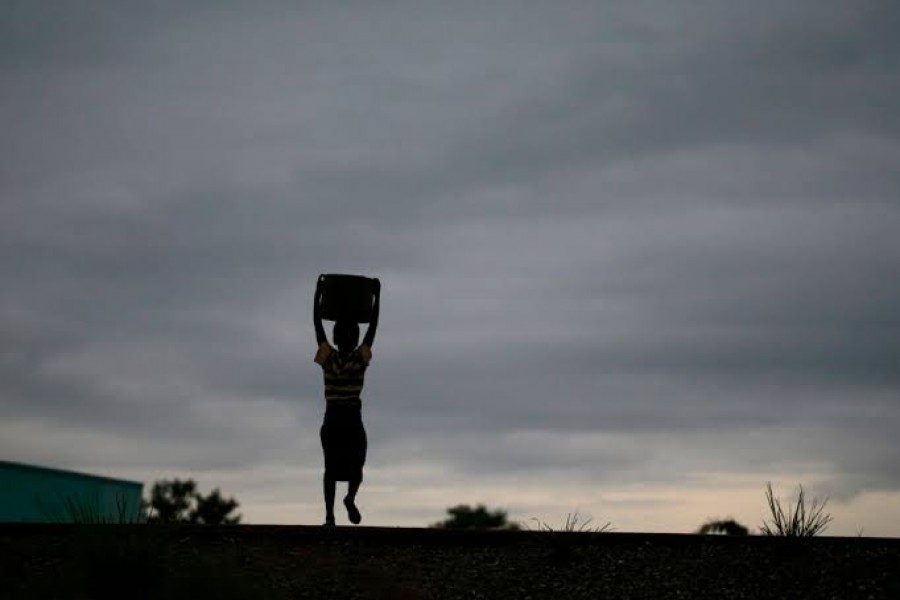
Published :
Updated :

Land is undeniably the foundation of any country's economic development, and it is directly linked to gross domestic product (GDP). It is the base upon which most economic activities take place in the country.
The future prospect of Bangladesh is fraught with many challenges. What is really worrying is that the country with the world's highest density of population is fast losing arable land due to growing industrialisation and rapid encroachment of human habitat on farming areas. Bangladesh is losing 8000 hectares of farmland every year from its original 13 million hectares due to urbanisation, industrialisation, unplanned rural housing and infrastructure buildings.
The country's fast growing population is now looking for new lands to build homes while entrepreneurs are going to remote areas to set up factories. Given the pace at which arable lands are utilised for non-farm purposes, one has reasons to fear that there will be barely any cultivable land left in the country after another 50 years.
In order to reverse this trend, the government has taken some steps including banning use of arable land for purposes other than agriculture. This is no doubt a laudable step. But many are raising the question: are these steps being followed up? A high-level committee suggested that the factories and educational institutions that have already been built should now go vertical.
The dwindling size of farms, rise in landlessness and constant depletion of farmland are posing formidable threats to Bangladesh's agriculture, increasing poverty and trapping many ultra-poor people in a vicious circle. The average farm size has been reduced to less than 0.6 hectares and the percentage of landless people stands at 58 in a country where nearly 80 per cent of the ultra-poor live in the rural areas.
The country's problem of landlessness has emerged as an international issue sometime back with the non-functioning of a rule-based global trading regime that has deprived Bangladesh of required support to overcome the nagging domestic problems of food and agriculture.
It is a matter of great regret that worries about farmland depletion at an alarming rate have fallen into deaf ears, while calls for ensuring optimum utilisation of arable land and bringing fallow land under cultivation remain in rhetoric alone. Successive governments concentrated all their efforts on higher production of rice, while import bills for fuel, cooking oils and pulses continued to inflate due to global price volatility. A long-pending suggestion to bring changes in crop pattern for diversifying agriculture remains unattended by the policymakers.
An integrated crop management package may be launched by designing agricultural zones based on weather and soil conditions for increasing agricultural production. It is also worrying to find that government expenditure on agricultural research has been steadily declining. Allocation for agricultural research should be raised to 2.0 per cent from 0.2 per cent of the agricultural gross domestic product (GDP) to reduce the dependence on imports.
The government should allocate more resources for rice research. This should at least be 0.4 per cent of the agricultural GDP. Investing more on agricultural research is vital for Bangladesh since it is losing cropland quite fast. The country could easily utilise regions such as Barind tracts, coastal zone and Sylhet haors to grow more Robi crops comprising pulses and oil seeds to significantly reduce imports.
If the use of arable land for non-farming purposes is not restricted immediately, the country is poised to face multiple problems arising out of land scarcity and rising population. These challenges must be addressed with topmost priority.
It is to be found out why people are becoming landless and how to solve the problem of shrinkage of arable land. Only then necessary measures may be taken. Bangladeshis, on an average, spent 60 per cent of their income on food in the 1990s and that sum has come down to 50 per cent now.
Therefore, by keeping the population growth rate under control, proper steps should be taken as early as possible to ensure planned urbanisation in the country. In Bangladesh, the problem of economic development has so far been addressed mainly in isolation from the population issue. But these are actually integral elements of a single strategy and thus need to be treated accordingly.
In fact, the issue of land reform is very important in the context of overall socio-economic reality in Bangladesh. It's imperative now for Bangladesh from whatever angle -- social, economic, political - it is seen.
All said and done, the government needs to formulate a cohesive policy for modernising land reform. Given the complex nature of the job, the government should push the land reform agenda forward based on strategic vision and doable implementation plans.


 For all latest news, follow The Financial Express Google News channel.
For all latest news, follow The Financial Express Google News channel.